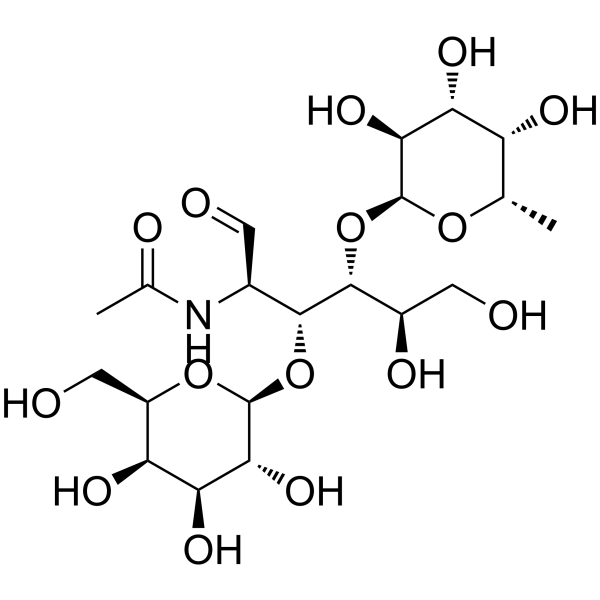N-glycans harboring the Lewis a epitope are expressed at the surface of plant cells.
A C Fitchette-Lainé, V Gomord, M Cabanes, J C Michalski, M Saint Macary, B Foucher, B Cavelier, C Hawes, P Lerouge, L Faye
Index: Plant J. 12(6) , 1411-7, (1997)
Full Text: HTML
Abstract
In plants, N-linked glycans are processed in the Golgi apparatus to complex-type N-glycans of limited size containing a beta(1,2)-xylose and/or an alpha(1,3)-fucose residue. Larger mono- and bi-antennary N-linked complex glycans have not often been described. This study has re-examined the structure of such plant N-linked glycans, and, through both immunological and structural data, it is shown that the antennae are composed of Lewis a (Le(a)) antigens, comprising the carbohydrate sequence Gal beta 1-3[Fuc alpha 1-4]GlcNAc. Furthermore, a fucosyltransferase activity involved in the biosynthesis of this antigen was detected in sycamore cells. This is the first characterization in plants of a Lewis antigen that is usually found on cell-surface glycoconjugates in mammals and involved in recognition and adhesion processes. Le(a)-containing N-linked glycans are widely distributed in plants and highly expressed at the cell surface, which may suggest a putative function in cell/cell communication.
Related Compounds
| Structure | Name/CAS No. | Molecular Formula | Articles |
|---|---|---|---|
 |
Lewis-a trisaccharide
CAS:56570-03-7 |
C20H35NO15 |
|
Studies on the three-dimensional behaviour of the selectin l...
1994-02-01 [Glycobiology 4(1) , 49-57, (1994)] |
|
CA-S27: a novel Lewis a associated carbohydrate epitope is d...
2013-10-01 [Cancer Sci. 104 , 1278-1284, (2013)] |
|
Cutting edge: carbohydrate profiling identifies new pathogen...
2003-02-15 [J. Immunol. 170 , 1635-1639, (2003)] |
|
Chemical synthesis of 2-acetamido-2-deoxy-4-O-(a-L-fucopyran...
[J. Am. Chem. Soc. 97 , 4063-4069, (1975)] |